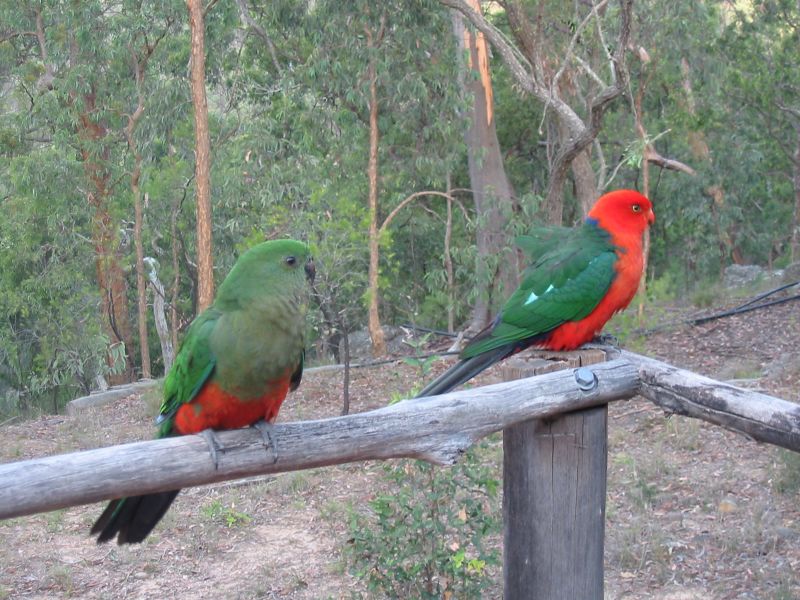Relative Humidity (RH) During the Incubation Process
The 3 most important factors of the incubation process are Temperature, Movement (egg rolling) and Relative Humidity – a measure of the amount of water vapor in the air at a specific temperature. It is given as a percentage value. Relative humidity depends on the temperature of the air, as warm air can hold more moisture than cold air.
Originally, parrots in the wild of different regions were adjusted to different relative humidity percentages; e.g. the Amazon, the Macaw, or the African Grey from the Rain Forests were adjusted to higher RH values than the Cockatoo, the Rosella, or the Ring Neck from the dryer areas such as the Australian Outback.
However, parrots in captivity are bred outside of their natural habitat, and therefor the RH values in these new environments might not be as optimal for egg incubation. In addition, the optimal relative humidity values for the same species could be different for various climates.
During the embryo’s development, fluids in the egg are evaporated contributing the egg’s weight loss. By weighing the egg, one can determine the proper RH value for a specific parrot at a certain climate, and adjust it accordingly in the incubator.
How to calculate an egg’s weight loss
Well-known researches indicate the ideal weight loss for an egg during the incubating process (between 18-28 days) is 15% (± 3%).
For example: A Grey African’s egg weighs 16 grams at the start of a 28 day incubation period.
The ideal weight loss during the whole incubation period would be 2.4 grams (16 grams X 15%). The weight loss during one day would be 0.0856 grams (2.4 grams divided by 28 days)
According to the calculation above, this Grey African’s egg should weigh 0.34 grams less after 4 days, meaning 15.65 grams (4 days X 0.0856 grams = 0.34 grams; 16 grams – 0.34 grams = 15.65 grams).
If the egg weight is as mentioned above, the relative humidity values inside the incubator are correct. If the egg weight is higher than 15.65 grams, the relative humidity percentages are too high and must be lowered. If the egg weight is lower than 15.65 grams, the weight loss is incorrect and the relative humidity percentages should be raised.
It is important to mention that the RH values are never constant during the incubation process – this a normal phenomenon. The breeder should attempt to maintain an average level of the desired RH value throughout the incubation process.
Some breeders incubate many eggs by using several incubators simultaneously, each with its own different RH values, transferring eggs between them according to the eggs’ need. The lost of weight should be measured using an accurate scale every 3-4 days. This procedure might seem a bit complicated at the first, however with a little experience a breeder can determine the proper RH values suitable to his different species, even without weighing the eggs.
The relative humidity values are different from incubator to incubator and depend on the incubator’s structure and air movement within. Therefor it is not possible to compare the RH values between different incubators.
If you are uncertain of the the proper RH value for your parrot during the beginning of the incubation process, try to set an average of 65% – 70% RH level for Rain Forest parrots, and 60% – 65% RH for those from dryer areas. However, the only way to determine the proper RH value is using the process described above. Setting the RH values without without calculating the eggs’ weight loss would be incorrect and irresponsible.
How to measure the relative humidity
As I have mentioned above, the presence of relative humidity in the incubator is an essential key for the incubation process and for successful hatching. Since humidity levels are relative and vary dynamically with changes of temperature, humidity measurements are problematic and should be measured according to the standard Temperature and Relative Humidity Charts showing the relative humidity in various temperatures.
Most of the standard humidity meters are designed to be used in a room temperature. These meters are inaccurate because a change in the room temperature causes them to display a wrong reading of the humidity level. A digital hygrometers might be housed in an attractive display, but those are generally inaccurate and one cannot determine if they deviations they display are significant or not. In addition there’s no certain way to determine whether a digital hygrometer displays incorrect humidity. Accurate digital hygrometers are very expensive and require periodic calibration. Several types of hygrometers exist for home use, but they are unsuitable for an incubator.
It is recommended to use an accurate Temperature / Humidity Measure, that is designed especially for incubators maintained at an average of 37.3°C and measures the relative humidity in percentages. The absence of such a humidity meter in today’s market drove us to come up with our own unique solution: the D.M.P temperature\humidity meter based on the wet\dry bulb principle.



Pingback: The key to perfect hatching | D.M.P. Engineering Ltd.()
Pingback: Humidity levels and egg weight loss | D.M.P. Engineering Ltd.()
Pingback: furacin 0.2 pomada para sirve()